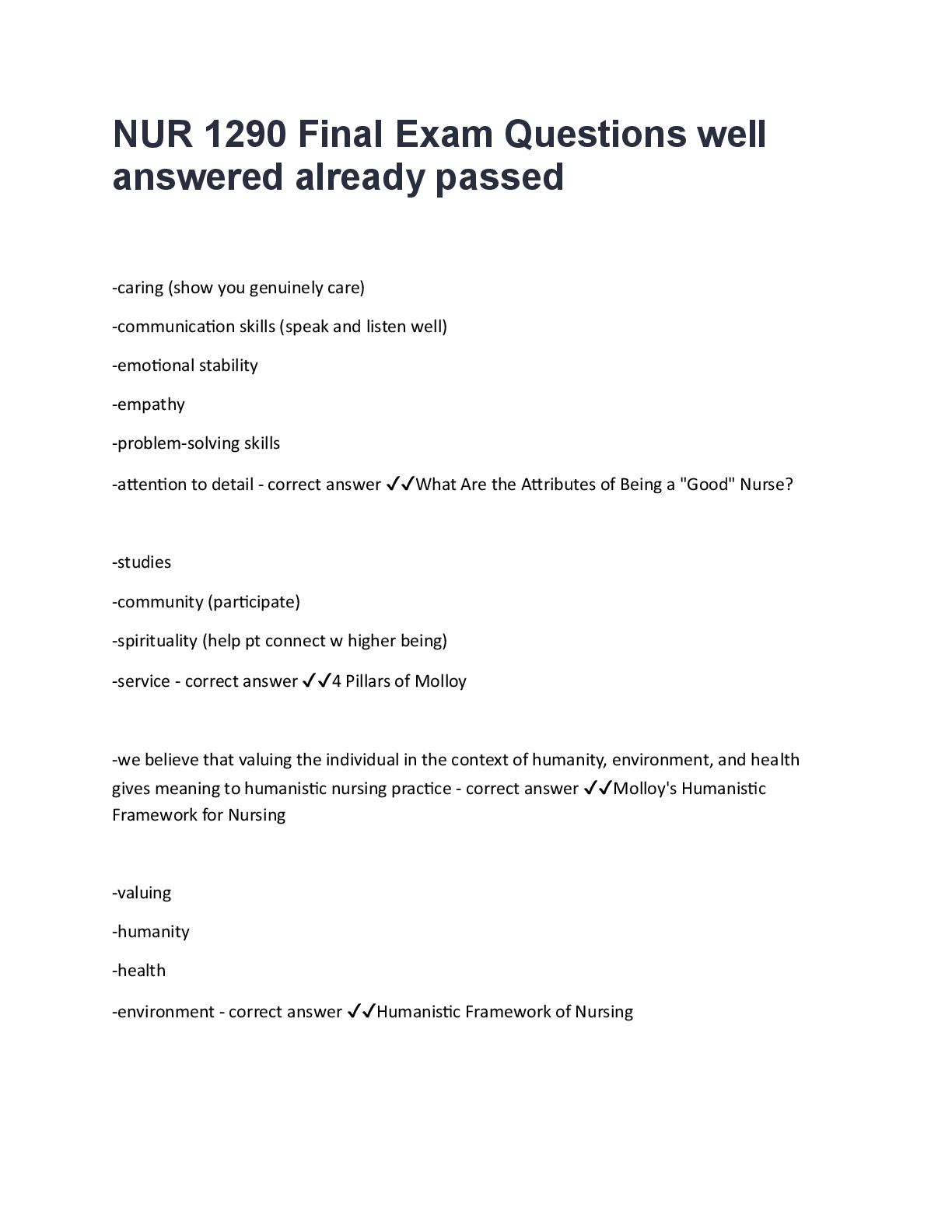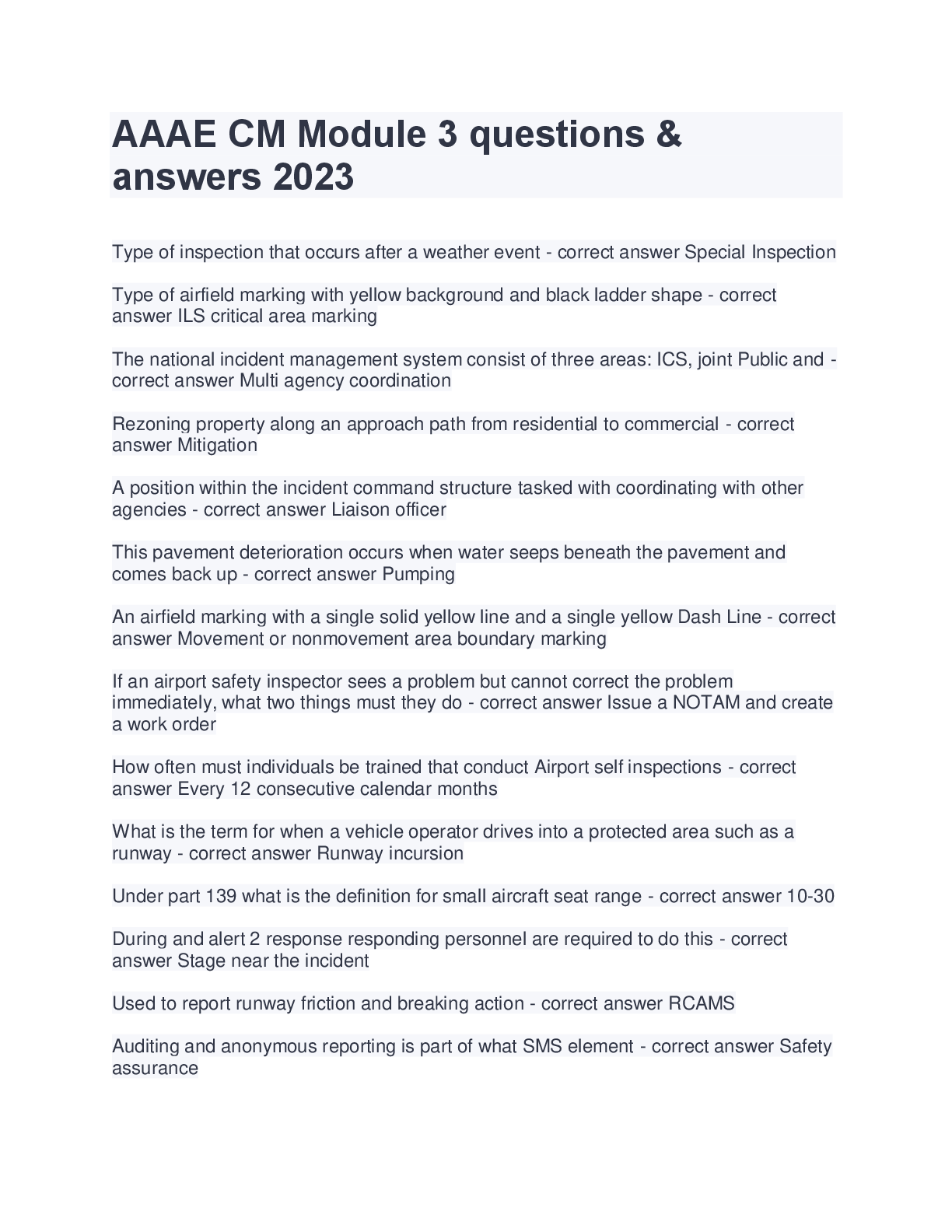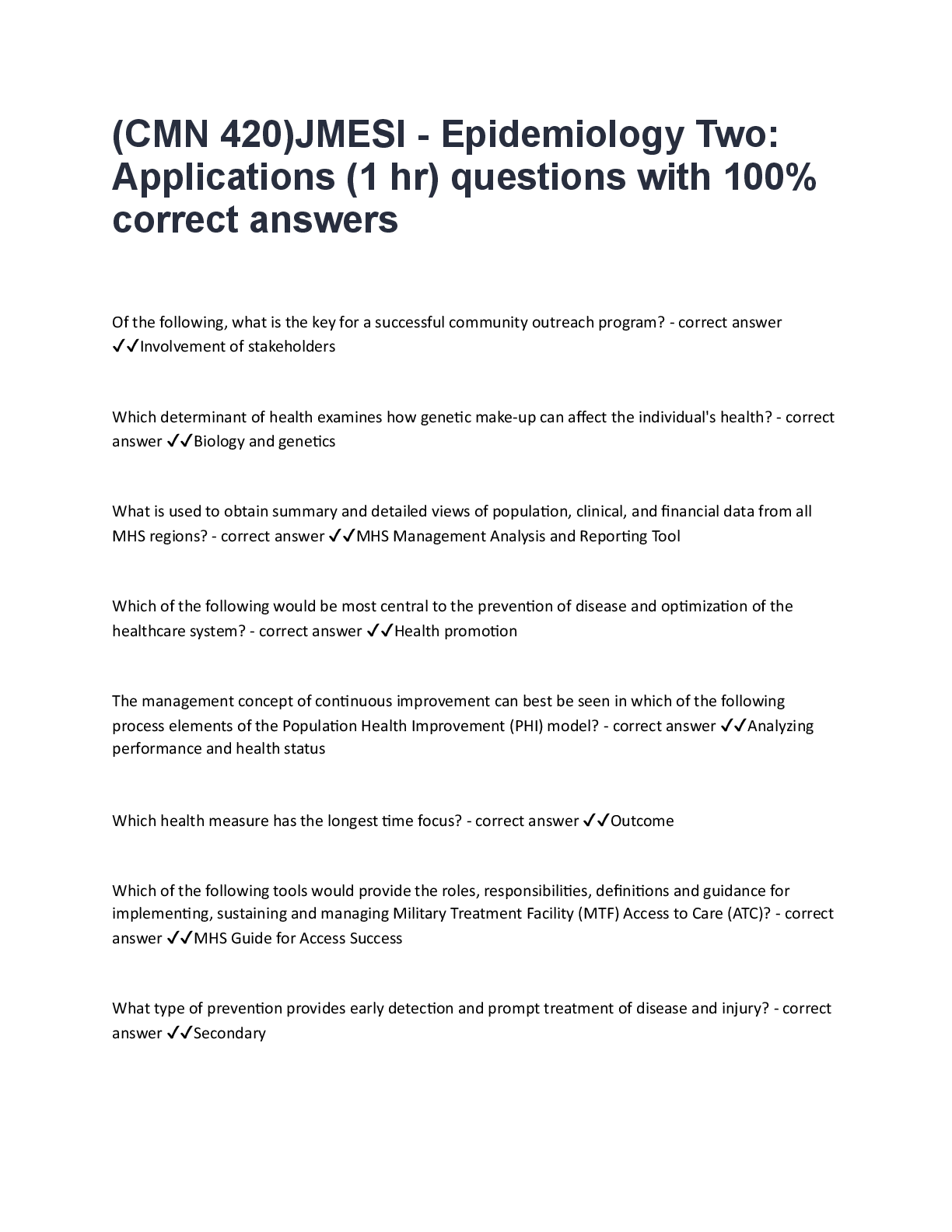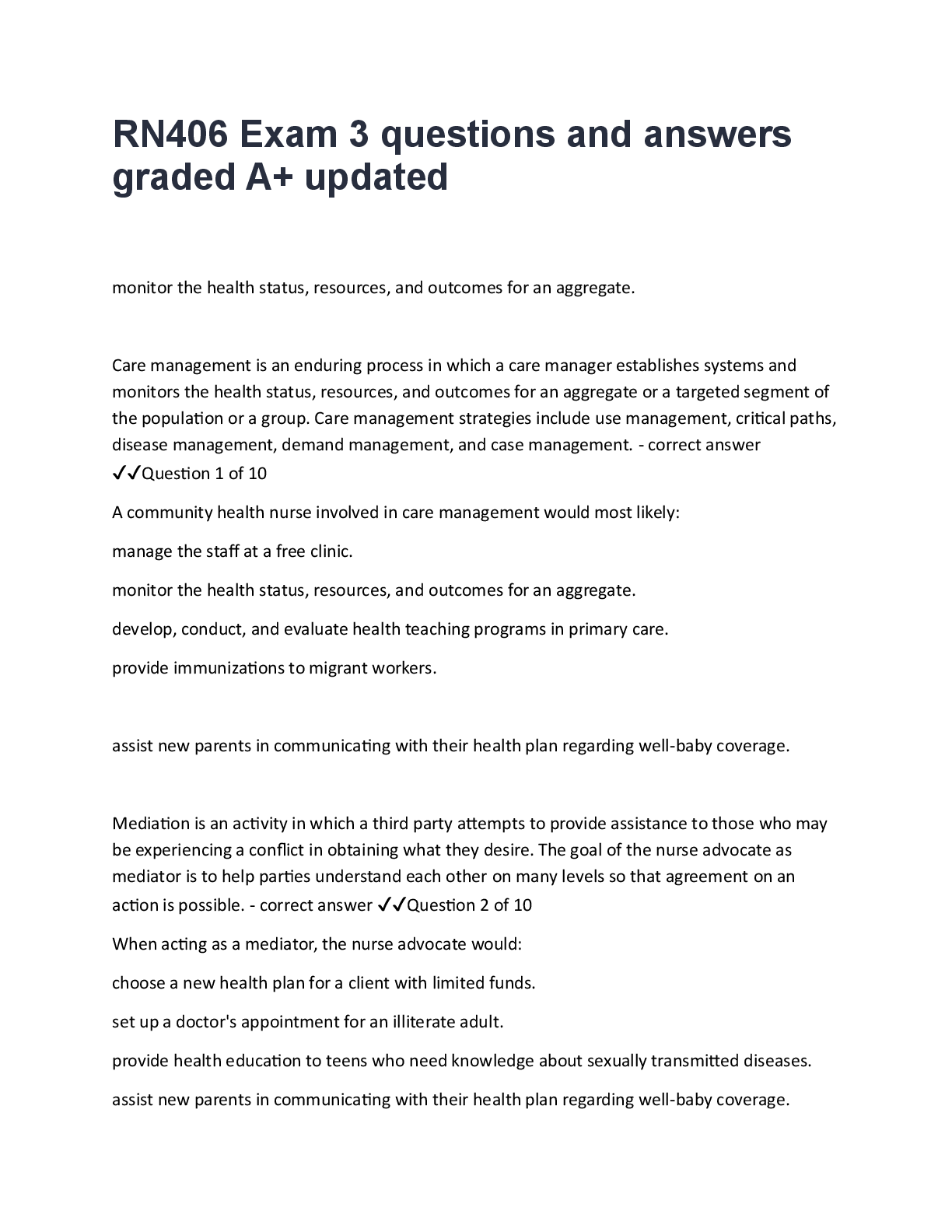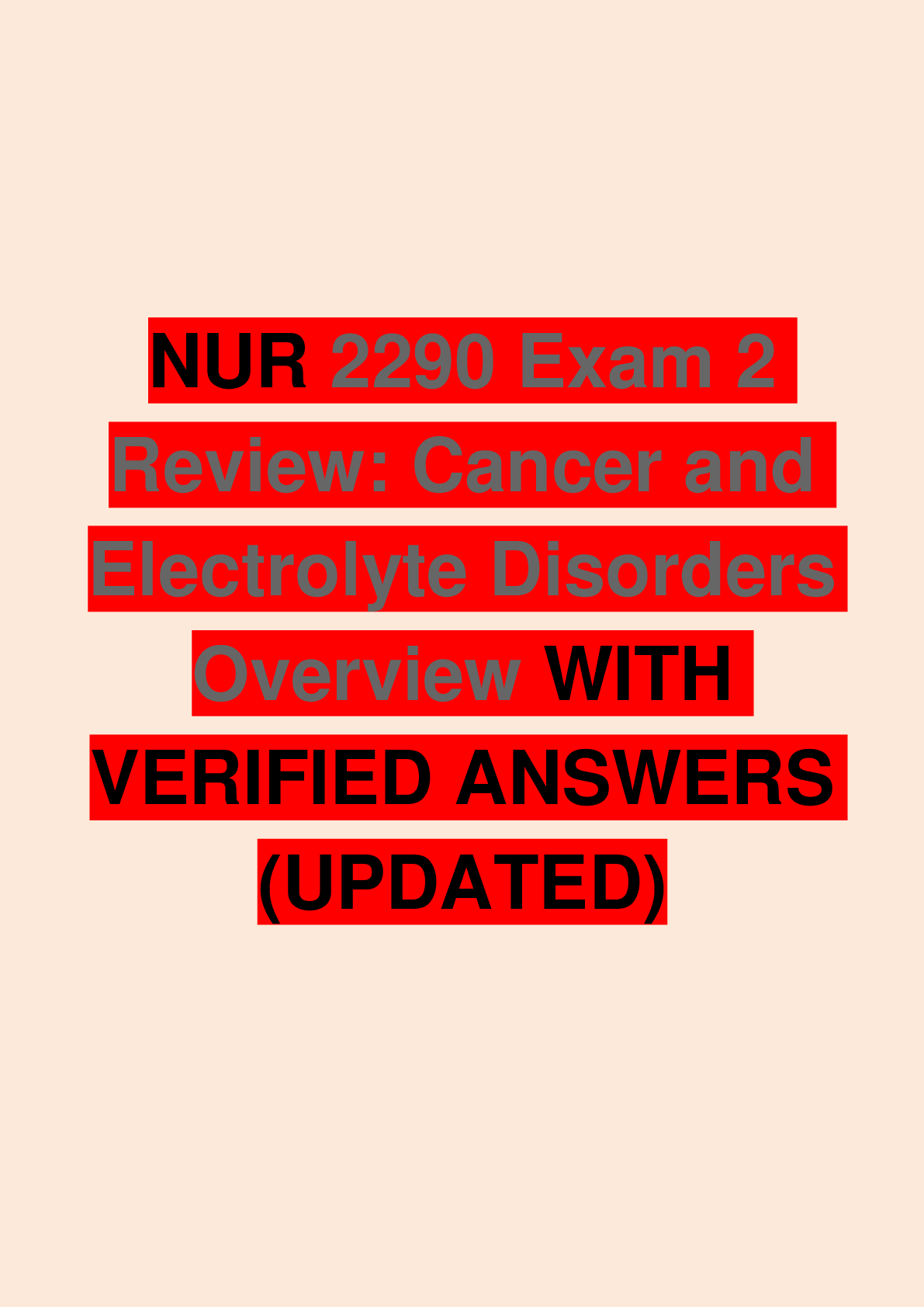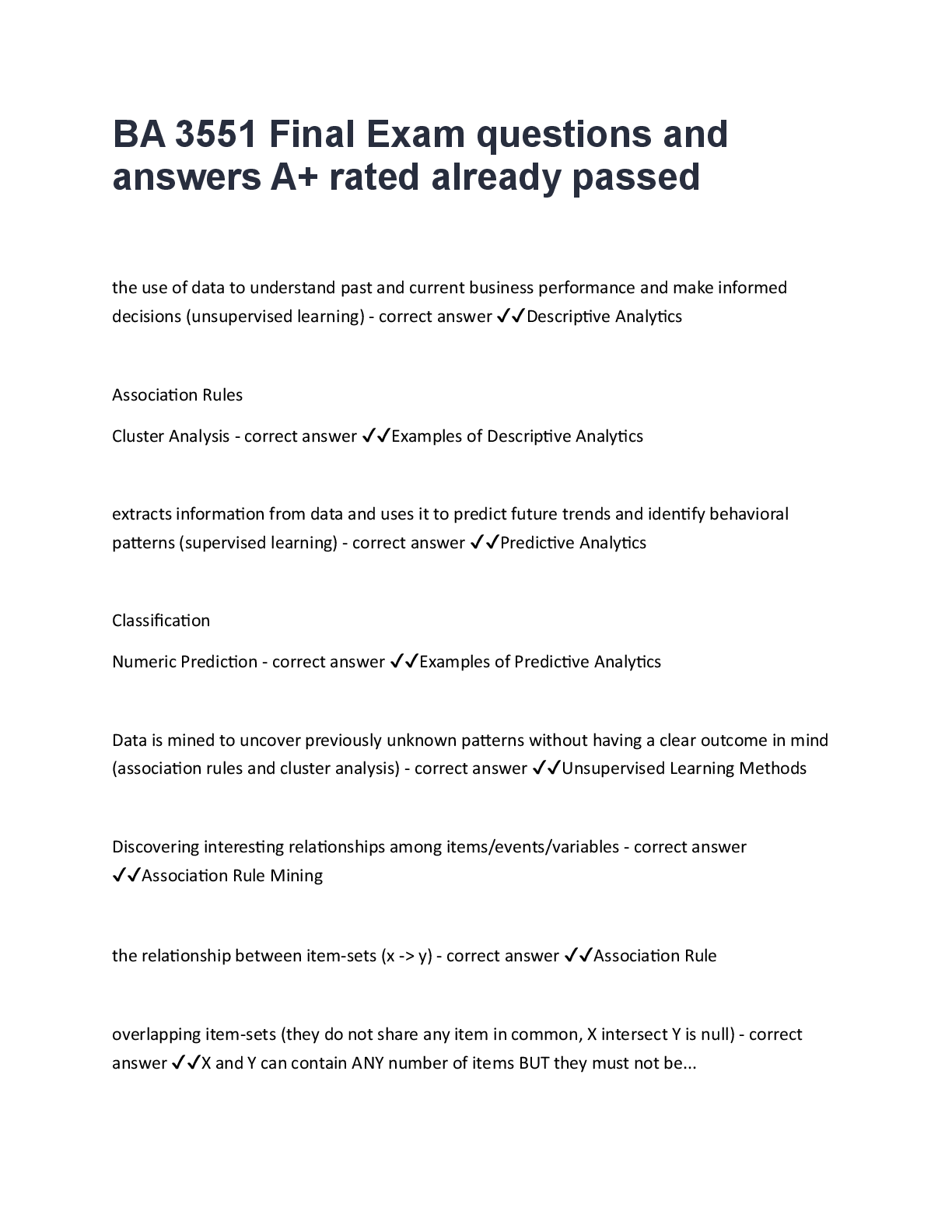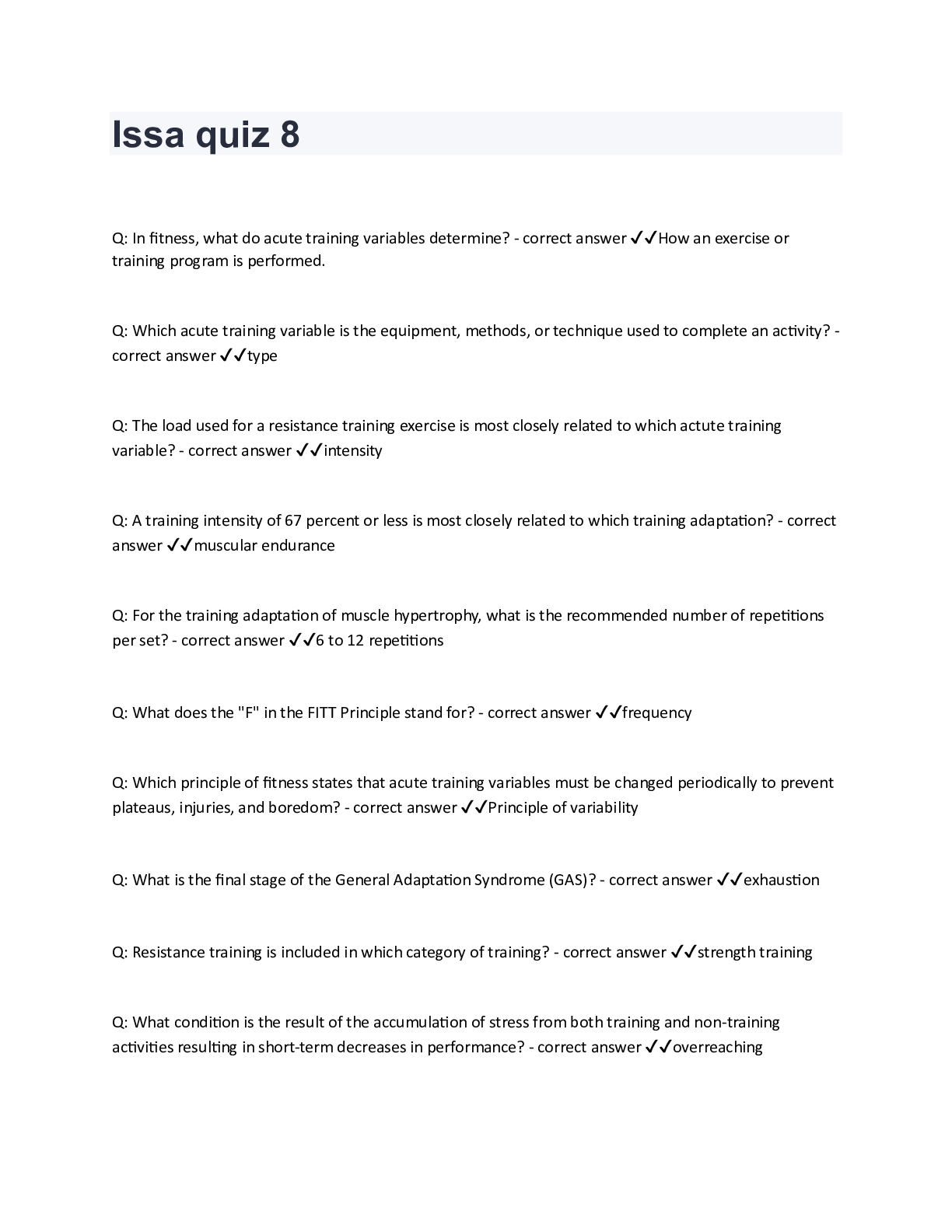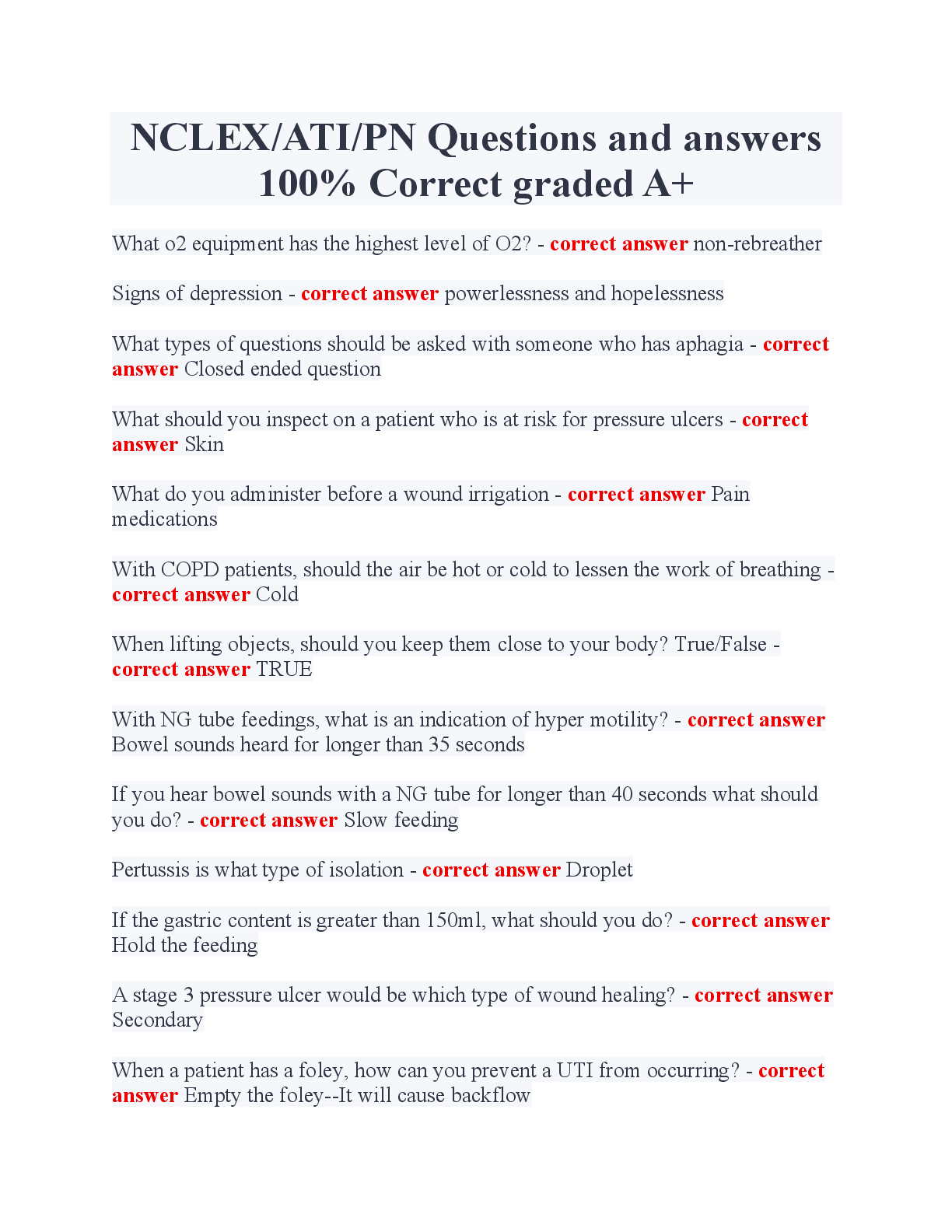AMLS Post Test 2021(updated) 3rd Edition correctly answered
Document Content and Description Below
Which of the following may cause primary respiratory alkalosis? Fever A quadriplegic male is experiencing difficulty breathing and restlessness. His skin is warm and his urine is dark, yellow ... and cloudy. Vital signs are BP 86/68, P-128, R-24, temp 101.2 F (38degrees C). Which type of shock should you suspect? Septic A 20-year-old male college student complains of acute onset of fever, headache, vomiting, and malaise. He appears ill and has a petechial rash on his extremities. What should you suspect? Meningitis A 20-year-old male complains of severe pain after a jellyfish sting. He has a red, swollen ankle and foot. What should you do? Wash the area and administer an analgesic The renin-angiotensin-aldosterone system is activated during shock in order to cause which of the following? Increase in preload, after load, and reabsorption of sodium An elderly COPD patient complains of difficulty in breathing upon exertion. She has a 1-week history of productive cough. She has pursed lip breathing. She is prescribed a bronchodilator as needed. Vital signs are BP 132/70, P-88, R-20 with Rhonchi. What should you suspect? Epiglottitis An anxious 32-year-old female complains of chest pains with palpitations. She has a history of Grave's disease. She reports she was seen in the ED earlier that day and had a CT scan of her abdomen with IV contrast. She is diaphoretic and has a temperature of 101.5 F (38.6 C). Vital signs are BP-100/62, P-156, R-30, BGL 133mg/dL. What should you administer? Normal Saline What statement is correct regarding responding to a suspected nerve agent exposure? Patients should be treated in a well-ventilated area What reference is the MOST beneficial to obtain for a suspected stroke? Last Known Well Which of the following statements is correct regarding radioactive materials? Simple clothing can stop beta particles from entering the body What finding is unique to pericarditis? Diffuse ST segment elevation A 21-year-old male complains of sharp chest pain and shortness of breath. The symptoms started when he lifted a heavy object. Vital signs are BP-152/96, P-108, R-24 and diminished on the left. What should you suspect? Spontaneous Pneumothorax A 72-year-old female complains of a sudden onset of a burning sensation to the left side of her forehead and blurred vision. She wants to follow up with her primary care physician tomorrow. Vital signs are BP-150/70, P-80, R-16. What should you do? Encourage her to be transported by ambulance to the hospital An anxious 61-year-old male complains of severe shortness of breath and localized chest pain with blood-tinged sputum. His dyspnea started when he stood up from watching television all day and increased in severity as he moved around. Vital signs are BP-104/60, P-98 and irregular, R-26 and labored. What should you suspect? Pulmonary Embolism Anaphylaxis is most commonly associated with which physiological event? Vasodilation A confused 67-year-old male has vomited multiple times prior to EMS arrival. He was involved in a car crash 48 hours prior. Bystanders state he became increasingly confused and lost coordination since the crash. Vitals signs are BP-150/88, P-72, R-18, BGL-92 mg/dL. What should you suspect? Subdural Hematoma What condition causes paroxysmal nocturnal dyspnea? Left-sided heart failure What is the initial treatment for a patient experiencing hyperosmolar hyperglycemic state (HHS)? Normal Saline An 18-year-old male nearly drowned at a local lake after treading water for 25 minutes. He is shivering uncontrollably and complains of nausea and weakness. Vital signs are BP-122/62, R-28, P-136, and his temperature is 93.2 F (34 C). What should you suspect? Mild hypothermia A 45-year-old male complains of shortness of breath. He has a history of alcohol abuse and presents with severe ascites. Vital signs are BP-142/78, P-104, R-24 with crackles. What should you suspect? Liver Failure A 22-year old male has recently undergone a surgical procedure to repair an injury to thoracic vertebrae T1-T2. Assessment indicates the patient is alert and oriented, bradycardic, hypotensive, and has warm, dry skin. Which type of shock is most likely occurring? Neurogenic [Show More]
Last updated: 2 years ago
Preview 1 out of 5 pages
 3rd Edition correctly answered.png)
Buy this document to get the full access instantly
Instant Download Access after purchase
Buy NowInstant download
We Accept:

Also available in bundle (1)

Package deal for AMLS 2023
AMLS Pretest v 1.11 questions l Fully solved 2023 Medical/AMLS Final review latest 2023 graded A+ to pass AMLS Final questions with complete solution latest 2023 Advanced Medical Life Support...
By Favourfourtune 2 years ago
$54.5
8
Reviews( 0 )
$10.00
Can't find what you want? Try our AI powered Search
Document information
Connected school, study & course
About the document
Uploaded On
Feb 07, 2023
Number of pages
5
Written in
Additional information
This document has been written for:
Uploaded
Feb 07, 2023
Downloads
0
Views
109

